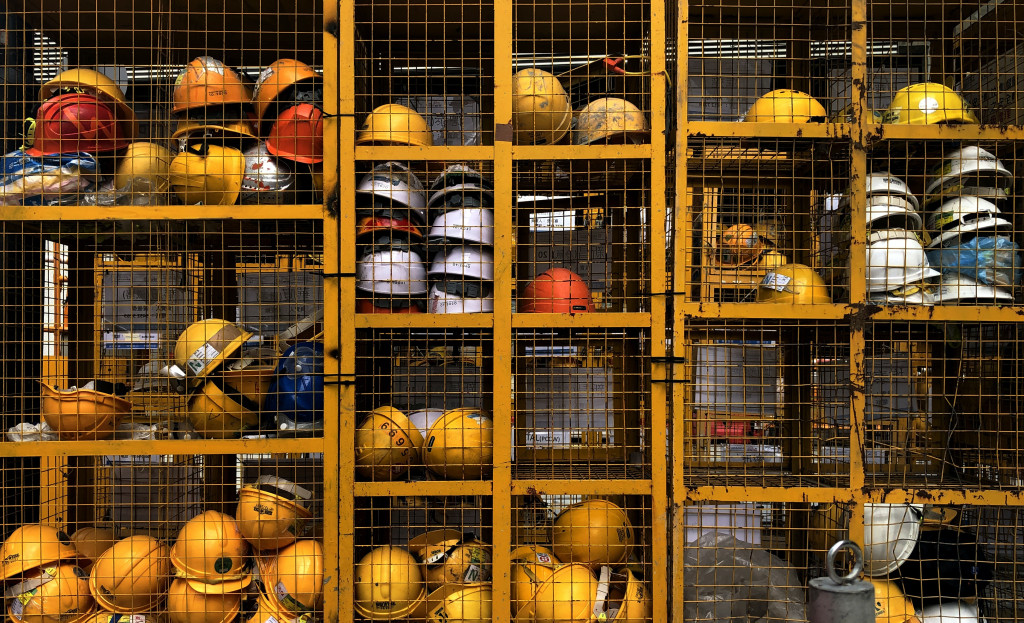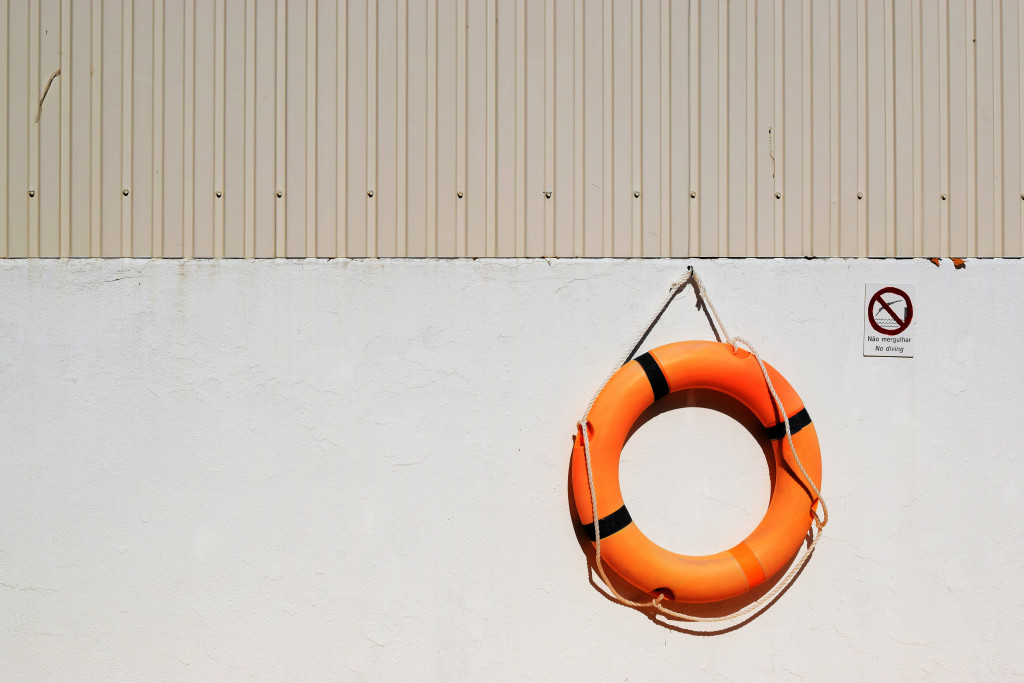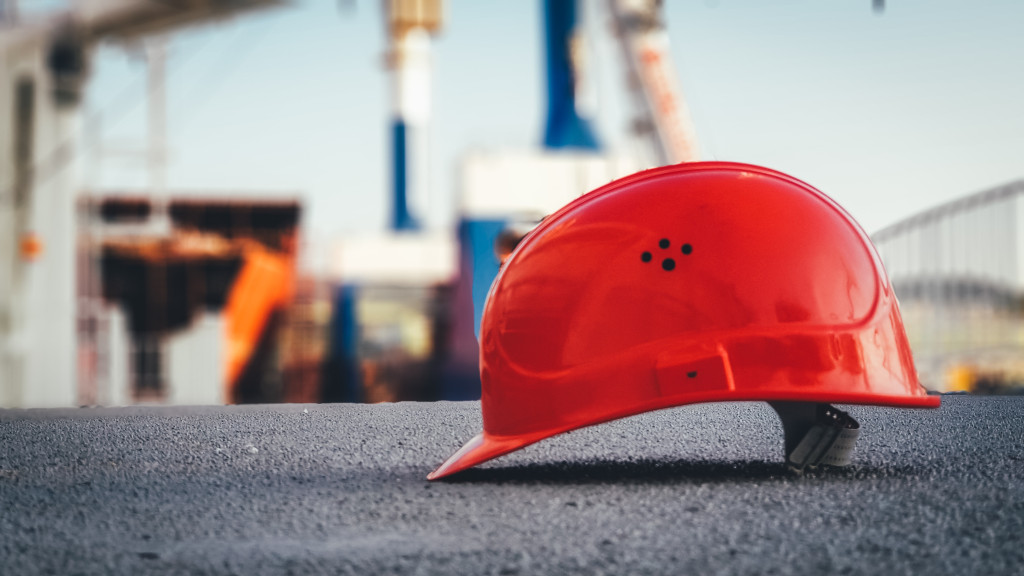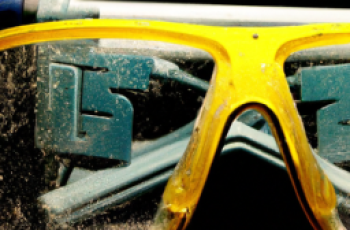In this article, you will learn about the importance of eye shields and protective measures when it comes to safeguarding your eyes. Whether you are in a construction zone, laboratory, or any other potentially hazardous environment, taking proactive steps to shield your eyes is crucial. We will explore the various types of eye shields available and discuss practical measures you can take to maintain optimal eye health. So, let’s jump right in and equip ourselves with the knowledge needed to keep our eyes safe and sound!

Types of Eye Shields
Wraparound Eye Shields
Wraparound eye shields provide comprehensive protection for the entire eye area. They feature a curved design that wraps around the sides of your face, protecting you from all angles. These shields are typically made of durable materials such as polycarbonate, which offers a high level of impact resistance. Wraparound eye shields are commonly used in industries where there is a high risk of flying debris or particles, such as construction and manufacturing.
Safety Glasses
Safety glasses are a popular choice for eye protection in various industries and settings. They are designed to provide coverage for the front of your eyes, offering protection against direct impact from objects. Safety glasses often feature frames that are made of lightweight materials like nylon or plastic, ensuring a comfortable fit. They may also have side shields to provide additional protection from debris and particles. Some safety glasses are equipped with prescription lenses to accommodate those who require corrective eyewear.
Goggles
Goggles provide a higher level of protection compared to wraparound eye shields and safety glasses. They offer full coverage for the eyes, creating a sealed barrier between your eyes and potential hazards. Goggles are typically made of impact-resistant materials such as polycarbonate or tempered glass. They are commonly used in industries where there is a risk of chemical splashes or exposure to harmful substances, such as laboratories and medical facilities. Goggles often feature an adjustable strap to ensure a secure and comfortable fit.
Choosing the Right Eye Shield
Consider the Hazard Level
When selecting an eye shield, it’s crucial to consider the level of hazard you will be exposed to. Different industries and activities may present varying risks to your eyes. For example, if you work in a construction site where there is a high chance of flying debris, opt for wraparound eye shields or goggles that offer full coverage. On the other hand, if you work in a laboratory where chemical splashes may occur, choose goggles that have a tight seal to prevent any liquids from getting into your eyes.
Evaluate Comfort and Fit
Eye shields are only effective if they are comfortable to wear and provide a proper fit. Look for shields or glasses with adjustable features, such as adjustable nose pads or temple arms, to ensure a personalized fit. It’s crucial to try on different options and assess how they feel on your face. Uncomfortable eye protection can distract you from your work and may even lead to improper usage, defeating the purpose of wearing them in the first place.
Check for Anti-Fog Coating
One common issue when wearing eye shields or goggles is fogging up, especially in demanding work environments or humid conditions. To prevent fogging and maintain clear vision, consider choosing eye shields with an anti-fog coating. This coating helps minimize condensation on the lenses by dispersing moisture, allowing you to work without interruptions. Anti-fog coatings are particularly beneficial in situations where you need to wear your eye shields for extended periods.
Eye Shield Maintenance
Cleaning and Disinfecting
Regular cleaning and disinfecting of your eye shields are essential to ensure clear vision and prevent potential infections. Clean your eye shields with mild soap and warm water, gently wiping away any dirt or debris. Avoid using harsh chemicals or abrasive materials that could damage the lenses. Additionally, disinfect your eye shields regularly using disinfectant wipes or sprays specifically designed for eyewear. Pay close attention to any areas that come into contact with your face, as these may accumulate oil or bacteria.
Storage Tips
Proper storage of your eye shields can extend their lifespan and maintain their effectiveness. When not in use, store your eye shields in a clean and dry case or pouch to protect them from scratches or damage. Avoid leaving them in direct sunlight, extreme temperatures, or areas with high humidity, as these conditions can deteriorate the materials or affect the clarity of the lenses. Additionally, keep your eye shields away from chemicals or substances that could potentially cause damage.
Inspecting for Damage
Regularly inspecting your eye shields is crucial to ensure they are still providing the necessary protection. Check for any signs of wear, such as scratches, cracks, or loose parts. Damaged eye shields may compromise your safety and should be replaced immediately. Inspect the frames, lenses, and straps (if applicable) to identify any issues. Remember that even small damage can significantly impact the effectiveness of your eye protection, so it’s essential to prioritize regular inspections.
Protective Measures
Importance of Eye Protection
Protecting your eyes is essential to maintain good vision and prevent eye injuries. Whether you are working in an industrial setting, participating in sports, or engaging in recreational activities, wearing proper eye shields can significantly reduce the risk of eye-related accidents. Eye injuries can range from minor irritations to more severe conditions that may lead to permanent vision impairment. By prioritizing eye protection, you are safeguarding your most valuable sensory organ.
Other Necessary Protective Gear
While eye shields are crucial for preventing eye injuries, it’s essential to remember that they are just one component of a comprehensive safety strategy. Depending on the nature of your work or activity, you may also need to wear other protective gear such as helmets, gloves, or face shields. Assess the specific hazards you may encounter and ensure you are equipped with the appropriate protective equipment to minimize the risk of injuries.
Training and Education
Proper training and education regarding eye protection are essential for ensuring its effective use. Employers should provide comprehensive training programs for their employees, highlighting the importance of eye protection, the correct usage of eye shields, and the potential hazards in the workplace or specific industry. Additionally, individuals engaging in sports or recreational activities should receive proper guidance on the appropriate eye shields to wear and the importance of using them consistently.

Eye Shield Standards and Regulations
ANSI/ISEA Standards
The American National Standards Institute (ANSI) and the International Safety Equipment Association (ISEA) have developed standards to ensure the quality and effectiveness of eye protection. These standards outline the requirements for various types of eye shields and establish testing methods to assess their impact resistance, optical clarity, and other essential features. When choosing eye shields, look for products that meet these ANSI/ISEA standards to ensure you are getting reliable and high-quality protection.
OSHA Regulations
The Occupational Safety and Health Administration (OSHA) in the United States sets regulations to safeguard workers’ health and safety in various industries. OSHA has specific requirements for eye protection in different work environments, outlining when and where it is necessary to wear eye shields. These regulations help employers establish proper safety protocols and ensure compliance with the law, ultimately reducing the risk of eye injuries in the workplace.
EN Standards
In Europe, eye protection standards are established by the European Committee for Standardization (CEN). Eye shields that comply with EN standards have undergone testing to meet the specific requirements outlined in these standards. These standards assess factors such as impact resistance, optical properties, and ergonomics to ensure the effectiveness and usability of eye protection devices.
Common Eye Hazards
Chemicals and Irritants
Chemicals and irritants pose a significant risk to your eyes, particularly in industries such as manufacturing, laboratories, and janitorial services. Chemical splashes or airborne substances can cause severe damage to the eyes, leading to chemical burns, corneal injury, or even blindness. It is crucial to wear appropriate eye shields, such as goggles with a tight seal, when working with hazardous chemicals or in environments where there is a high risk of chemical exposure.
Flying Debris and Particles
In industries such as construction, woodworking, and metalworking, there is a constant presence of flying debris and particles. These materials can easily enter the eyes and cause injuries, ranging from minor scratches to more severe conditions like corneal abrasions or penetrations. Wraparound eye shields or safety glasses with side shields are essential in protecting your eyes from these hazards, ensuring that your vision remains unobstructed and your eyes are shielded from potential injuries.
UV and Blue Light
Prolonged exposure to ultraviolet (UV) radiation and blue light can have detrimental effects on your eyes. UV radiation from the sun can contribute to the development of cataracts and other eye conditions over time. Blue light, emitted by digital screens, LED lights, and the sun, has been linked to eye strain, dryness, and potential long-term damage to the retina. Wearing eye shields or glasses with UV and blue light protection can significantly reduce your risk of these conditions and maintain healthy eyesight.

Benefits of Eye Shields
Preventing Eye Injuries
The primary benefit of wearing eye shields is the prevention of eye injuries. Eye shields act as a physical barrier between your eyes and potential hazards, effectively reducing the risk of impact, chemical exposure, or debris entering your eyes. By wearing appropriate eye protection, you significantly decrease the chances of experiencing eye-related accidents and potentially lifelong vision impairments.
Enhancing Visibility
Clear vision is crucial in performing tasks efficiently and accurately. Eye shields with high-quality lenses and proper fit can enhance your visibility by reducing glare, improving contrast, and providing optimal optical clarity. By minimizing visual obstructions, you can maintain focus on your work or activities, ensuring accurate and precise results.
Reducing Eye Fatigue
Engaging in tasks or activities that require prolonged visual concentration can result in eye strain and fatigue. This is particularly common when working on computers, reading for extended periods, or performing intricate tasks. Eye shields with features such as anti-fatigue lenses or proper lighting filters can help reduce eye strain, allowing you to work comfortably for longer periods without experiencing fatigue or discomfort.
Eye Shield Myths Debunked
Myth: Only Certain Industries Need Eye Shields
Contrary to popular belief, eye shields are not limited to specific industries or professions. Eye injuries can happen in a variety of settings, from construction sites to kitchens, laboratories to sports fields. It’s crucial to assess the potential hazards in your work or recreational environment and determine whether eye protection is necessary. Regardless of your industry or activity, prioritizing eye safety should be a top priority.
Myth: Regular Eyeglasses Offer Sufficient Protection
While regular eyeglasses offer some level of eye protection, they are not designed to withstand the same degree of impact or provide comprehensive coverage as dedicated eye shields. Regular eyeglasses are typically made of materials that can shatter upon impact, posing a risk of injury to the eyes. Additionally, eyeglasses may not have the necessary side shields to protect against debris or particles. When working in hazardous environments, it is crucial to wear appropriate eye shields that meet the required safety standards.
Myth: One-Size-Fits-All Eye Shields
There is no one-size-fits-all solution when it comes to eye shields. Each person’s face shape and size vary, and proper fit is essential for effective eye protection. Eye shields or glasses that do not fit properly may slip off, impede your vision, or fail to provide adequate coverage, rendering them ineffective. It’s important to try on different options and select eye shields that offer a secure and comfortable fit for your specific needs.
Eye Shield Selection for Specific Industries
Construction Industry
In the construction industry, the risk of flying debris, particles, and impact injuries is high. Workers in this field should opt for robust eye shields that provide full coverage and excellent impact resistance. Wraparound eye shields or goggles with a snug fit and durable materials like polycarbonate are ideal choices. Additionally, consider eye shields with anti-fog coatings to combat fogging issues that may arise due to the physically demanding nature of construction work.
Medical and Healthcare Sector
In the medical and healthcare sector, professionals are exposed to various hazards, including chemical splashes, infectious materials, and the risk of bloodborne pathogens. Eye shields, such as goggles, with a tight seal and anti-fog properties are essential in protecting healthcare workers’ eyes from potential contamination. Additionally, eye shields with coated lenses that offer superior optical clarity can be beneficial in delicate medical procedures.
Chemical and Laboratory Settings
Chemical and laboratory settings often involve handling hazardous substances, which may result in chemical splashes or volatile fumes. Goggles with a secure seal and impact-resistant materials are essential in these environments to prevent eye exposure to chemicals. It’s crucial to select eye shields that offer both chemical resistance and optical clarity, allowing lab workers to perform their tasks safely and efficiently.
Eye Shields for Sports and Recreational Activities
Sports Eyewear Options
Sports and recreational activities expose participants to various eye hazards, such as fast-moving objects and collisions. Specific eyewear options are designed to cater to the unique needs of each sport. For instance, sports glasses with durable frames and shatter-resistant lenses are popular for activities like basketball and racquet sports. Ski goggles provide protection against UV rays, wind, and flying snow particles. Consider eyewear specifically designed for your preferred sport to ensure optimal eye protection.
Importance of Eye Protection in Sports
Eye injuries are common in sports, and they can have severe consequences that may permanently impact your vision. Wearing appropriate eye protection while engaging in sports is essential to mitigate the risk of injuries caused by high-speed projectiles, impact with other players, or exposure to harmful UV rays. Whether you are playing a contact sport or participating in outdoor activities, prioritize your eye safety by investing in suitable sports eyewear that offers the necessary protection for your particular activity.
Common Eye Injuries in Sports
In sports, eye injuries can range from minor irritations to serious traumas that require medical attention. Common eye injuries in sports include corneal abrasions, orbital fractures, and chemical burns. High-impact sports like hockey or boxing pose a greater risk of severe eye injuries. By wearing sports-specific eye protection, such as goggles or visors, you can minimize the occurrence and severity of eye injuries, allowing you to enjoy your favorite activities with peace of mind.
In conclusion, protecting your eyes should be a top priority in all aspects of life, whether at work, during sports, or engaging in recreational activities. Understanding the various types of eye shields available, considering the hazard level, evaluating comfort and fit, and checking for anti-fog coating are crucial steps in choosing the right eye shield. Proper maintenance, adherence to standards and regulations, and awareness of common eye hazards are essential for ensuring effective eye protection. By wearing appropriate eye shields, you not only prevent eye injuries but also enhance visibility, reduce eye fatigue, and maintain healthy eyesight. Debunking common eye shield myths and selecting specific eye shields for different industries or activities further reinforces the necessity of eye protection. Remember, your eyes are irreplaceable, so protect them with the right eye shields and safety measures.



